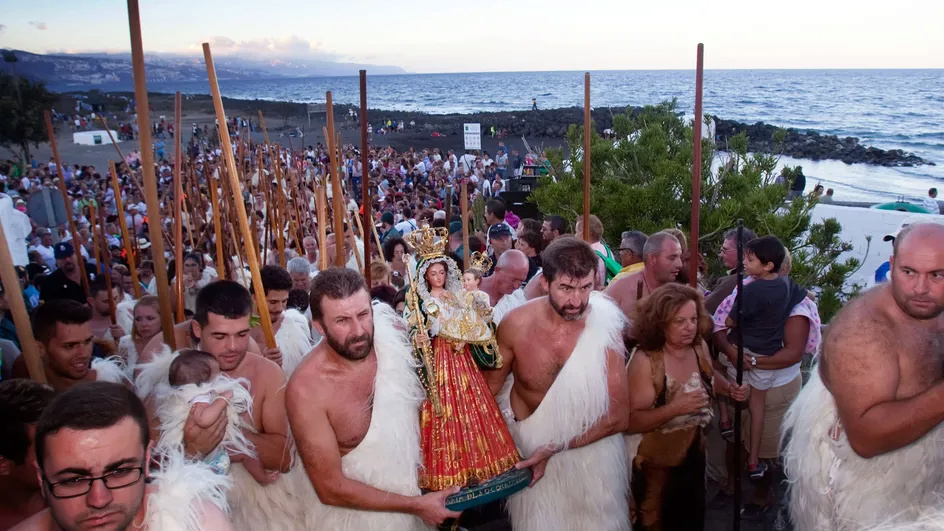Amazigh "cultural awakening" in the Canary Islands: the population of the Spanish archipelago rediscovers its Guanche ancestors
The population of the Canary Islands before the Spanish conquest is the heir of the Guanches, natives of Amazigh origin.

Inhabitants of the Canary Islands wearing the outfit of the Guanche shepherds, a pre-Hispanic indigenous population of Amazigh origin. They take part in the pilgrimage of the Virgin of Socorro, in Tenerife, on September 7, 2013. (DESIREE MARTIN / AFP)
The Canarian population is rediscovering its Amazigh (Berber) culture, largely destroyed by five centuries of Spanish colonization. When the Spaniards, under the banner of the Crown of Castile, undertook the conquest of the Canaries at the end of the 15th century, the islands were inhabited by the Guanches, Amazigh tribes originating from North Africa. Their inhabitants strongly opposed the invasion, but they were defeated by the Castilians in 1496. Many survivors were sent to the Iberian Peninsula, while those who remained in Tenerife assimilated the way of life and the religion of the conquerors. The Canarian people, result of the fusion of European settlers and the indigenous Amazigh population, are passionate today about this lost memory.
The contribution of genetics and linguistics
Thanks to history, archaeology, ethnography and comparative linguistics, the Berberness of the Canarians is beginning to come out of the shadows. We know from genetic and linguistic analyzes that their native ancestors were predominantly Amazigh. According to recent studies, their genomes are very similar to Mozabite or Sahrawi populations. This genetic component is still very present in the current populations of the Canary Islands. Especially among women, because the Spaniards were mainly represented by the male sex.
The Guanches would have arrived between the 5th century BC and the beginning of the Christian era. Since there are no archaeological remains of boats, it is assumed that they arrived in successive phases with Phoenician sailors and Roman galleys. The latest research shows that they had no knowledge of navigation, hence the idea that they were deported by the Romans, which would also explain the lack of exchanges between the different islands of the archipelago.
We also know that they brought with them their domestic animals – goats, sheep, pigs, dogs – as well as wheat, beans and barley. They lived mainly in natural caves and were engaged in agriculture and animal husbandry.
Rediscovering a forgotten past
The Guanches are therefore the only Amazighs not to have been Islamized. Their civilization, almost eradicated by the Spanish conquista, has however left traces and vestiges updated in recent decades. In particular, signs similar to the Tifinagh alphabet, a Amazigh written language, have been found engraved on rocks.
After the conquest of the Canary Islands, Spanish would become the official and dominant language, but the natives of the archipelago had their own language, known as Canarian Amazigh. The name of the villages, the first names, the customs cannot be explained without the Amazigh (Berber) culture. Even if the language has disappeared, in the Canarian Spanish dialect we continue to distinguish words of Amazigh origin.
Today, Canarians are passionate about this forgotten memory. Significant research work has helped to re-establish this cultural identity. If the Amazigh language has fallen into oblivion – the last written references of the use on the island of Tenerife date back to the 17th century – it would have been spoken in certain communities until the 19th century.
Rediscover the roots
In recent years, a claim to Amazigh identity has emerged, fueled by a growing knowledge of pre-Hispanic culture. The Izuran site works to disseminate this knowledge and the latest research and cultural associations work to keep alive the ancestral heritage of Canarian culture. With, for example, a revival of old village festivals, such as Beñesmer, which celebrates the August harvest.
Source:websites

